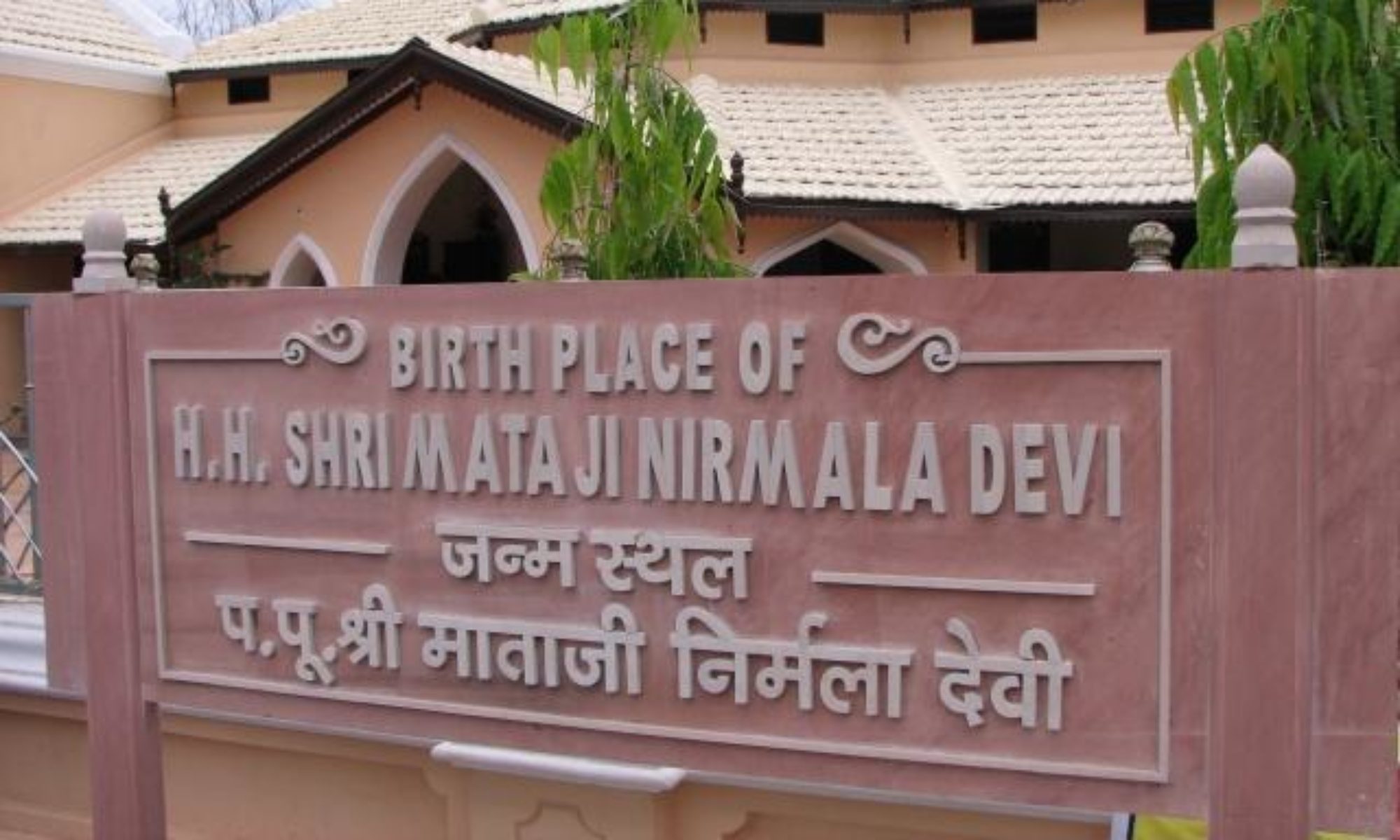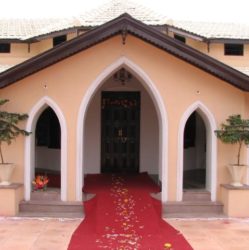Patalkot / Chhota Mahadev Cave at Tamia / Devgarh Fort / Waterfalls at Kukdi Khapa & Lilahi / Gotmar Mela of Pandhurna / Tribal Museum / Neelkanthi / Anhoni Village / Other Places
PATALKOT Top
‘Patalkot‘ situated in the hilly block ‘Tamia‘ of Chhindwara District, has acquired great importance because of its Geographical and Scenic beauty. Patalkot is a lovely land scape located at a depth of 1200-1500 feet in a velley. Because of the great depth at which it is located this place is christened as ‘Patalkot’ (‘Patal menas very deep, in Sanskrit). When one looks down the place sitting at the top of the valley, the place looks like a horse shoe in shape. People belive it as the entrance to ‘Patal‘. There is one more belief that after worshipping ‘Lord Shiva’ Prince ‘Meghnath’ had gone to Patal-lok through this place only. People say that this place was ruled by Kings in 18th and 19th Century and that there was a long tunnel connecting this place to ‘Pachmarhi’ in Hoshangabad District.
The place is spread over an area from 22.24 to 22.29 Deg. North, 78.43 to 78.50 Deg. East. The place is located at a distance of 62 Km from the district headquarters in the North-West direction, and 23 Km from Tamia in North-East direction. Patalkot is spread over an area of 79 Sq.Km. at an average height of 2750-3250 feet above Mean Sea Level. ‘Doodh‘ river flows in the picturesque valley. It is a treasure of forest and herbal wealth. There are 12 villages and 13 hamlets in this valley, with a total population of 2012 (1017 male and 995 female). Most of the people belong to ‘Bharia‘ and ‘Gond‘ tribes. Because of the inaccessibility of this area, the tribals of this region were totally cut off from the civilised world. But, with the constant efforts being made by the Government, tribals of this area started tasting the advantages of adopting civilised life. ‘Patalkot Development Agency‘ has taken up the overall development of this area and people. Now, there are Primary Schools, Primary Health Centres, Veterinary Health Centres etc. serving the needs of these people. The Government has built stop dams for irrigation purpose, people started using modern cultivation methods, tools. They employ diesel/ electric pump sets to irrigate their land, use improved seeds, fertilisers. Every effort is being made to bring these people to the main stream. The day is not far away when we can see our tribal brothers of Patalkot mixing well with the modern world. ‘Patalkot’ is attracting many tourists because of its geographical location, scenic beauty, culture of the people who live here, and the immense and rare herbal wealth.
CHHOTA MAHADEV CAVE AT TAMIATop
Tamia village is situated at a distance of 32 miles from Chhindwara on Chhindwara – Pachmari Road. The steep hills, dense forests, and big winding ghats have all combined to make Tamia a beauty spot and a tourist place. A P.W.D. rest house is picturesquely situated on a steep hill commanding an extensive view of the deep jagir forests and mountainous ranges of Satpura notably Mahadeo and Chaura Pahad in the background. The view from the rest house is noted for its constantly shifting natural scenary which is inspiring to the visitors to this place.
The government postal bungalow situated in Tamia is a pleasant place as it is located in hilly range at 3765 feet height above Mean Sea Level surrounded by dense forest. The sunrise and sunset scenes give a breath taking experience to the visitors. About 1.5 Km from this bungalow there is a cave where in the holy ‘Shivling‘ (the diety of Lord Shiva) of ‘Chota Mahadev‘ exists. Just beside the cave is a small water fall. Both of these provide a feast to the eyes of the visitors.
DEVGARH FORT Top
This famous historical fort of Devgarh is situated 24 miles south of Chhindwara beyond Mohkhed. The fort is built on a hill which is fortified by a deep valley clothed with dense reserve forest. The fort is approachable upto its foot by motor road. The nature is bountiful here.
It was the capital of ‘Gond‘ empire till 18th Century and had its glory and glitter at that time. Now, one can find only the delapitated remains of the mighty kingdom and fort. Devgarh kingdom was considered to be the largest tribal kingdom in Central India. The archeological structures like palace, fort and other buildings make it a beautiful tourist place and remind us of the past glory. It is believed that there was a secret underground passage connecting Devgarh to Nagpur, which was used by the kings to escape at times of emergency.
Among the remnants of the fort the main gate facing North speaks of its past glory. Besides this, there remain Nagarkhana, a place of cattle drum, scattered remnants of the fort walls and ruins of the Darbar Hall. There is a curious reservoir named ‘Mortitanka’ at the top of the fort. It is said that at one time the water stored in the reservoir remained so clear that one could have a clear view of even a coin lying at its bottom. It is believed to be built by King Jatava of Gond Dynasty. The design of Devgarh fort is much akin to Moghul architecture, and hence some historians are of the view that the fort was built by Bakhta Buland who succeeded King Jatava.
At present Devgarh village is a small inhabitance. The ruins at this place speak of its past glory.
WATERFALLS AT KUKDI KHAPA & LILAHI Top
The picturesque location of Kukdi khapa water fall falls in the Chhindwara to Nagpur narrow gauge railway line, between the stations Umaranala and Ramakona. The water fall is situated in the panoramic ‘Sillevani’ Mountain range. The height of this fall is approximately 60 feet. The location is more beautiful immediately after a spell of good rains. While travelling in the train along the narrow gauge towards Nagpur one can visualise this beautiful picnic spot.
The Lilahi Water fall is located in the down stream of the District’s second biggest river ‘Kanhan’. This fall is situated in the route from Mohkhed to Pandhurna via Devgarh. It is close to the place called ‘Narayan Ghat’ near Lilahi village on the Kanhan river. The lovely sight of the water fall surrounded by mountain rocks and colourful nature is in deed a feast to the visitor. The water fall will have sufficient down flow water from July to January months.
GOTMAR MELA (FAIR) OF PANDHURNA Top
Sixty five kilometers from Chhindwara, in the headquarters of ‘Pandhurna’ tahsil a unique fair (mela in hindi) by name ‘Gotmar Mela’ is celebrated every year on the second day to ‘Bhadrapad’ New Moon day. This fair is celebrated on the banks of the river ‘Jam’. A long tree is erected in the middle of the river with a flag at its very top. The residents of the villages ‘Savargaon’ and ‘Pandhurna’ gather on either bank of the river, and start pelting stones (‘Got’) at the persons of the opposite village who try to cross into the mid of the river and remove the flag on top of the tree trunk. The village whose resident succeeds in removing the flag will be considered victorious. The whole activity happens amidst the chanting of the sacred name of ‘Maa’ Durgaji. Several people get wounded in this celebration and the District Administration makes elaborate arrangements for the smooth conduct of this rare fair.
TRIBAL MUSEUM Top
The Tribal Museum started in Chhindwara on 20th April 1954 has acquired ‘State Museum’ status in the year 1975. And on 8th September 1997 the Tribal Meseum name has been changed to “Shri Badal Bhoi State Tribal Museum”. Shri Badal Bhoi was a revolutionary tribal leader of the district. He was born in Dungria Titra village of Parasia tehsil in 1845. Under his leadership thousands of tribals were demonstrated at collectors bunglow in 1923, held Lathi charge and he was arrested. On 21st August 1930 he was arrested by English Ruler for breaking the Forest rule at Ramakona (under the leadership of Shri Vishnath Damodhar) and sent to Chanda jail. He left his last breath in jail in 1940 after the english ruler given poison to him. Due to his contribution to the national freedom strugle, the Tribal museum name has been changed to “Shri Badal Bhoi State Tribal Museum”. Since 15th August 2003, the Tribal Museum remains opened for tourists on Sundays also.
As per the directions of head of the Tribal Research Organisation, Bhopal the district Tribal museum “Shri Badal Bhoi State Tribal Museum” is maintained by Museum Incharge Officer with the help of artists and peons. It is comprises of 11 rooms and 4 galleries. It depicts the Tribal culture of 45 (approx.) tribal communities living in Madhya Pradesh & Chhatisgarh states. It is the oldest and the biggest Tribal Museum in Madhya Pradesh. Since 1st September 2003, nominal entry fee of Rs.2.00 per head is being collected. Before to this it was allowed free of cost. Everyday 100-150 visitors visiting the Tribal Museum, which depicts the usefulnes and attractiveness of the museum.
It is a treasure house storing the antique and rare collection of items related to the tribals living in the district. One can find items related to the houses, clothes, ornaments, arms, agriculture tools, art, music, dance, celebrations, the dieties worshipped by them, religious activities, herbal collection and so on. The museum throws light on the rich tradition and ancient culture of the tribal community. Gound & Baiga, the prime tribes living in the district, it has depicted the family living styles. Also it has shown how the Agria tribes uses to mould iron, Patalkots Dehia agricultural system pictures etc. which attacts the tourists and looks like living items. To put it in a nut-shell, the museum is a one stop collection-cum-information centre on the tribes of this district.
NEELKANTHI Top
Some ruins of a temple can be seen by the side of Siphna stream which flows at some distnace of Neelkanthi, a village which is 14 miles south-east of Chhindwara town. The entrace gate to the main temple is said to date back between 7th and 10th century. It is believed that at one time an area of 264 x 132 Sq. feet inside the gate was surrounded by a rampart. The stone slabs of the gate are fastened together with iron hooks. An illegible insciption can be found on one of the stone pillars of the temple. There is a reference to Raja Krishna III of Rashtrakut kingdom. The design of the gate is Bahmanic style.
ANHONI VILLAGE Top
Anhoni village is situated near Mahuljhir Police Station and at a distance of 2 miles from the village Jhirpa on Chhindwara-Piparia road. The place is within forest area. A hill stream with hot and boiling Sulphur springs flow near the village. These springs at a further distance assume the form of a nullah. The water of this spring is believed to be beneficial for skin diseases and for certain impurities of the blood.
OTHER PLACES OF IMPORTANCE Top
‘Kalyani Devi‘ temple in ‘Kapurdha’ village near ‘Chourai’
‘Sharada Devi‘ temple in ‘Saliwada’ near ‘Amarwara’.’Sharada Devi’ temple in ‘Saliwada’ near ‘Amarwara’.
‘Nagadwari‘ caves in Junnardeo Tahsil, where one of the caves is so big to shelter thousands of people from rain.

